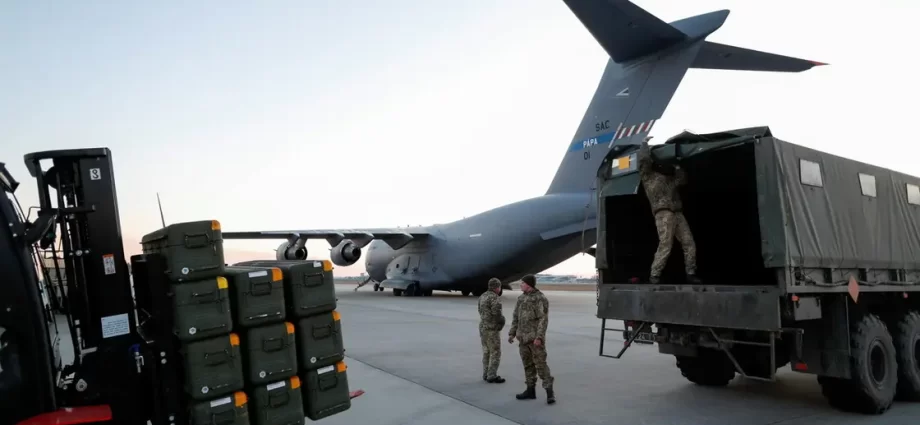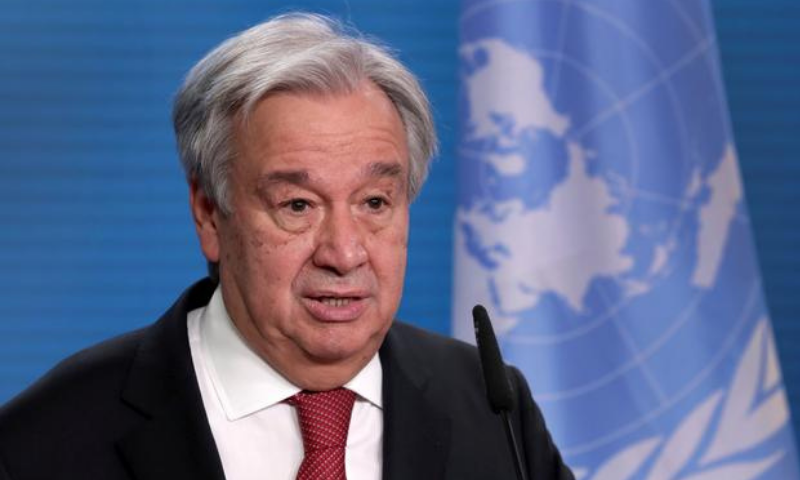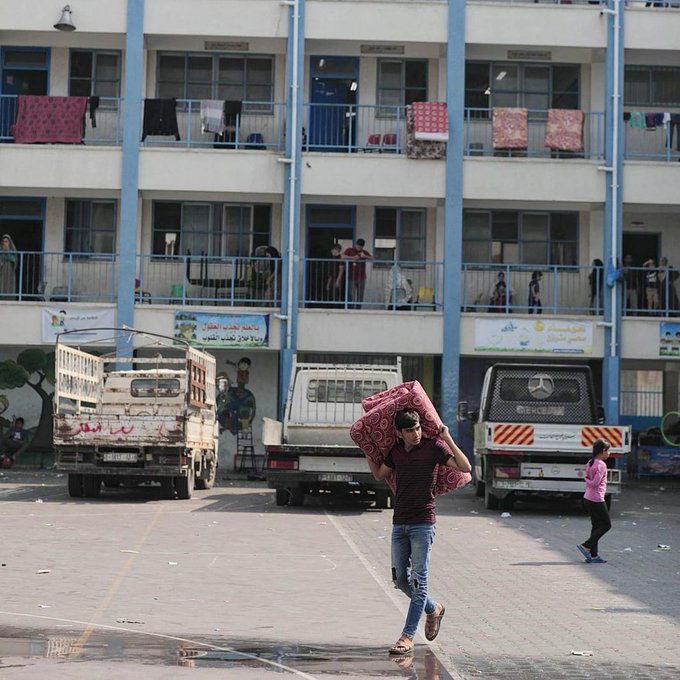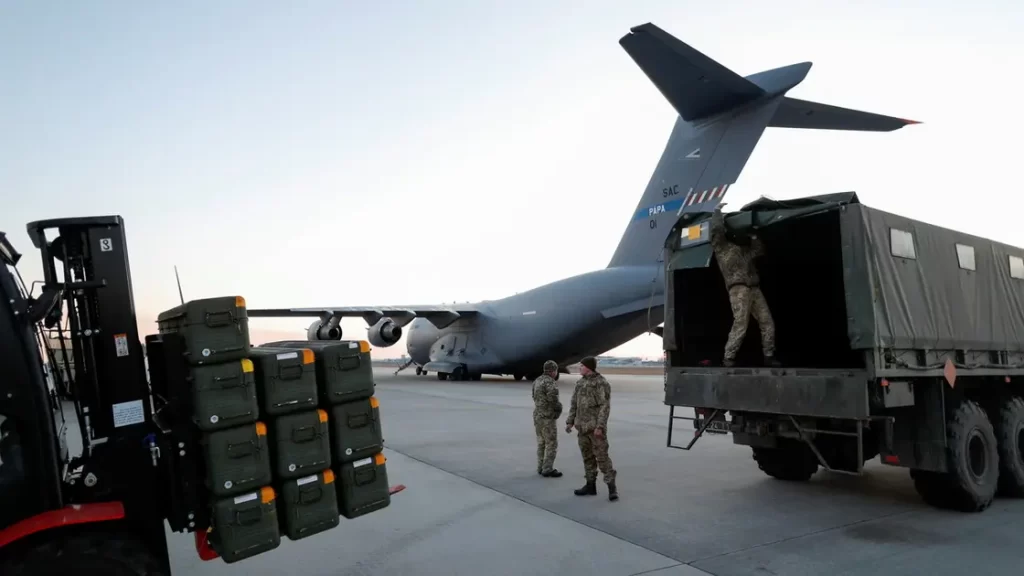
Over 1,600 killed on both sides as Israel pounds Gaza with fiercest air strikes ever
Israeli military spokesperson Rear Admiral Daniel Hagari said. “We will reach them everywhere.”
Israel said on Tuesday it had reclaimed control of the Gaza border, pounding the enclave with the fiercest air strikes in the 75-year history of its conflict with the Palestinians despite a Hamas threat to execute a captive for each home hit. Meanwhile so far at least 1,100 Israelis have been killed and 2,741 others injured in result of the Hamas attacks. Prior to this Israeli media had confirmed death of over 800 Israelis in result of Hamas attacks.
At least 770 Palestinians including 140 children have since been martyred and 2,200 others have been injured in result of Israeli air strikes, according to officials, while whole districts in Gaza have been flattened. The condition of 22 injured Palestinians is critical.
Air strikes wrought widespread destruction in the Jabalia refugee camp, where charred bodies were pulled from the rubble and relatives wailed in grief.
The United Nations said 180,000 Palestinians had been made homeless, many huddling on streets or in schools. Smoke and flames rose into the morning sky, while bombardment of the roads often made it impossible for emergency crews to reach the scene of strikes.
At the morgue in Gaza’s Khan Younis hospital, bodies were laid on the ground on stretchers with their names written on their bellies. Medics called for relatives to pick up bodies quickly because there was no more space for the dead.
There were heavy casualties in a former municipal building struck while being used as an emergency shelter for displaced families.
“There is an extraordinary number of martyrs, people are still under the rubble, some friends are either martyrs or wounded,” said Ala Abu Tair, 35, who had sought shelter there with his family after fleeing Abassan Al-Kabira near the border. “No place is safe in Gaza, as you see they hit everywhere.”
Israel already imposed a “total siege” on the Gaza Strip on Monday, cutting off food, water and electricity supplies, and sparking fears that an already dire humanitarian situation will swiftly deteriorate.
Tel Aviv has been left reeling by Hamas’s unprecedented ground, air and sea assault. The death toll rose to more than 900 in Israel, which has retaliated with a withering barrage of strikes on Gaza, raising the death toll in the besieged enclave to 687.
The Israeli army said Tuesday it had “more or less restored control” over the Gaza border after Saturday’s mass breach by Palestinian fighters.
The Israeli Defence Force (IDF) claimed it had recovered the bodies of around 1,500 Hamas fighters inside Israel, confirming the scale of Saturday’s assault. It said it had “nearly completed” the evacuation of Jewish communities around the border.
Israel has vowed “mighty revenge” since Palestinian gunmen rampaged through its towns, leaving streets strewn with bodies in by far the deadliest attack in its history.
It has called up hundreds of thousands of reservists and placed Gaza, crowded home to 2.3 million people, under total siege.
Israeli media said deaths from Saturday’s Hamas attacks had reached 900, mostly civilians gunned down in homes, on streets or at a desert dance party.
Scores of Israelis and some foreigners were taken to Gaza as hostages. Some were paraded through the streets.
Gaza’s health ministry said Israel’s retaliatory strikes had killed at least 770 people and wounded more than 4,000. The air strikes, already the heaviest ever, intensified on Tuesday night, shaking the ground and pouring columns of smoke and flames into the morning sky.
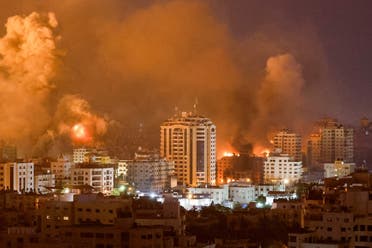
The United Nations said more than 180,000 Gazans had been made homeless, many huddling on streets or in schools. Bombardment shut roads to emergency crews.
At the morgue in Gaza’s Khan Younis hospital, bodies were laid on the ground on stretchers with names written on their bellies. Medics called for relatives to pick up bodies quickly because there was no more space for the dead.
There were heavy casualties in a former municipal building struck while being used as an emergency shelter.
“There is an extraordinary number of martyrs, people are still under the rubble, some friends are either martyrs or wounded,” said Ala Abu Tair, 35, who had sought shelter there with his family after fleeing Abassan Al-Kabira near the border. “No place is safe in Gaza, as you see they hit everywhere.”
Radwan Abu al-Kass, a boxing instructor and father of three, said he had been one of the last to evacuate his five-story building in the Al Rimal district after the area came under attack. He finally left when a missile hit the building, which was destroyed by a bigger strike after he got out.
“The whole district was just erased,” he said.
Three Gaza journalists were killed when an Israeli missile hit a building while they were outside reporting, bringing the number of journalists killed to six. UN High Commissioner for Human Rights Volker Turk said civilians had been harmed in strikes on tower blocks, schools and UN buildings.
“International humanitarian law is clear: the obligation to take constant care to spare the civilian population and civilian objects remains applicable throughout the attacks,” he said.
In Israel, there has still been no complete official count of the dead and missing from Saturday’s attacks. In the southern town of Be’eri, where more than 100 bodies have been retrieved, volunteers in yellow vests and face masks solemnly carried the dead out of homes on stretchers.
A long, wide trail of blood wound along the floor of a house where bodies had been dragged out to the street from a blood-soaked kitchen strewn with overturned furniture.
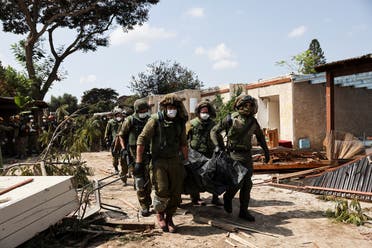
“The thing I want the most is to wake up from this nightmare,” said Elad Hakim, a survivor from a music festival where Hamas had killed 260 party goers at dawn. “Everything was so amazing, the best party I’ve been to in my life, until it … from paradise to hell, in one second.”
Israel’s next move could be a ground offensive into the Gaza Strip, territory it abandoned in 2005 and has kept under blockade since Hamas took power there in 2007. The total siege it announced on Monday would block even food and fuel from reaching the strip.
Israel also struck the border gate inside the sole crossing from Gaza into Egypt. Hours earlier it had advised Gazans to flee to Egypt, only to issue a swift clarification to say the crossing was closed.
Hamas operatives had “nowhere to hide in Gaza,” Israeli military spokesperson Rear Admiral Daniel Hagari said. “We will reach them everywhere.”
Israel was caught so completely off guard by Saturday’s attack that it took more than two days to finally seal off the multi-billion dollar high-tech barrier wall, meant to have been impenetrable.
Military spokesperson Hagari said early on Tuesday there had been no new infiltrations from Gaza since the previous day.
Israeli leaders will now have to decide whether to constrain their retaliation to safeguard the hostages. Hamas spokesperson Abu Ubaida issued the threat on Monday to kill one Israeli captive for every Israeli bombing of a civilian house without warning – and to broadcast the killing.
Western countries have strongly backed Israel. Arab cities have seen street demonstrations in support of the Palestinians. Iran, Hamas’s patron, celebrated the attacks but denied playing a direct role in them.
“We kiss the hands of those who planned the attack on the Zionist regime,” Supreme Leader Ali Khamenei, said in a televised speech wearing a Palestinian scarf, though he said accusations Tehran was behind it were false.
A deadly clash on Israel’s northern border on Monday raised fears of a second front in the war, with Iran’s other main ally in the area, Lebanon’s Hezbollah movement, being drawn into the fray. It said it was not behind any incursion into Israel.
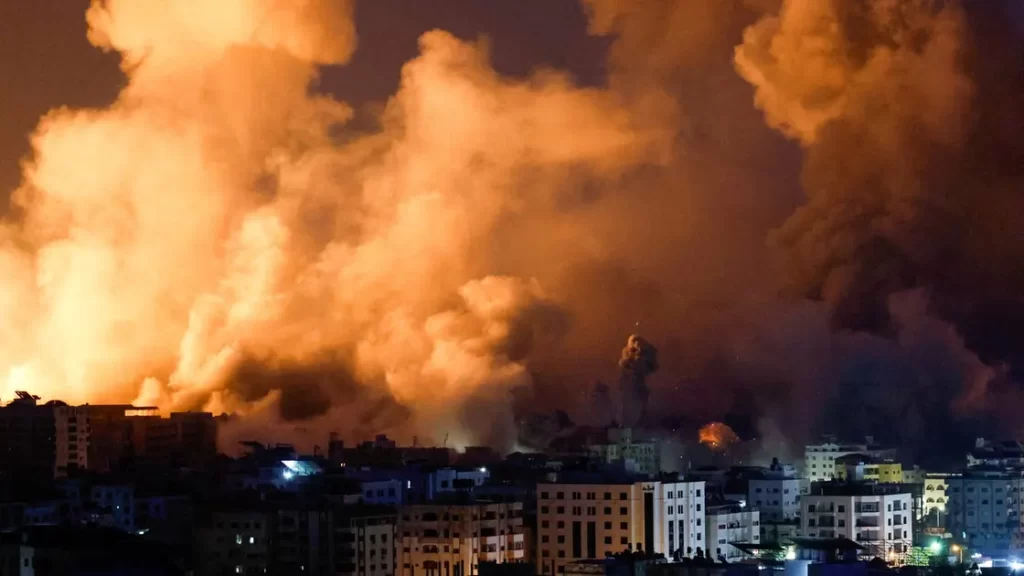
Israel’s Air Force and Navy conducted strikes on Hamas military targets in Gaza as part of a “different counterattack method,” IDF Spokesperson Rear Adm. Daniel Hagari said on Tuesday.
“The IDF has shifted to a different counterattack method and is striking in waves. Tens of Israeli Air Force (IAF) aircraft have struck aerially every four hours over the past 36 hours. The IAF has all its reserve personnel manning aircraft both in the headquarters and the squadrons on a wise scale,” Hagari said.
He added that the IAF conducted thousands of strikes on thousands of targets using thousands of munitions. “We are using every piece of intelligence to maximize damage to meeting spots for terrorists planning to invade Israel, houses belonging to senior Hamas commanders, terrorist operational centers and headquarters and terrorist infrastructure,” Hagari stated.
Simultaneously to the IAF strikes, “the Israeli Navy has been operating in the maritime arena, striking from sea to land.” Hagari said: “Terrorist operatives have attempted to dive, swim and utilize boats to attack through Israel’s Zikim Beach. They have failed. There are tens of neutralized Hamas terrorists from the Hamas’ naval force on the Beach or on boats.”
The flare up of tensions in Israel started on Saturday when Hamas launched an unexpected and unprecedented surprise attack. Supported by a barrage of rockets, Hamas militants breached the blockade from Gaza Strip into adjacent Israeli towns. This sudden incursion resulted in numerous casualties and abductions – over 1,600 dead and thousands more injured.
Israel, in response, launched airstrikes on targets in Gaza and Prime Minister Benjamin Netanyahu declared a state of war with Hamas, vowing to exact an unparalleled cost on the militant group.
More than 187,518 people have been internally displaced in the Gaza Strip, with numbers expected to keep rising as Israel continues to launch fresh raids on the besieged city, the United Nations Agency for Palestinian Refugees (UNRWA) said on Tuesday.
“UNRWA Gaza Field Office, where national and international staff are present, suffered collateral damage due to airstrikes in the Rimal area in the center of Gaza City,” the agency said in a statement.
Collateral damage is used to refer to deaths and injuries of people who are not soldiers, and damage that is caused to their homes, hospitals, and schools.
Staff members are working to provide basic services to those displaced, however, the conditions are difficult, with some shelters overcrowded, and with limited availability of potable water, the UNRWA said.
Latest SitRep on situation in the#GazaStrip Mass displacement escalated in past 24 hours across the Gaza Strip, reaching 180,000 people – expected to increase further. 137,500 people sheltering in 83
Before the recent escalations, UNRWA said about 3,000 Palestinians had been displaced due to previous Israeli violence in the city.
Israeli raids on the besieged city were ongoing from the early hours of Tuesday morning, Al Arabiya and Al Hadath sources reported.
This comes after Israeli Prime Minister Benjamin Netanyahu vowed to take vengeance on Gaza in an offensive against Hamas militants who launched a surprise operation on Israel on Saturday.
“What we will do to our enemies in the coming days will reverberate with them for generations,” he said in a nationally televised statement.
Entire neighborhoods in Gaza have since been reduced to rubble, according to The Associated Press.
In Gaza’s Rimal neighborhood – home to universities, media organizations and the offices of aid organizations – residents were forced to flee their homes after the Israeli military said it was bombing Hamas targets in the area, sending some buildings to the ground and tearing others in half.
According to The Associated Press, the devastation in Rimal signaled what could be a new Israeli tactic: warning civilians to leave certain areas and then immediately hitting those areas with airstrikes of unprecedented intensity.
If Israel’s bombardments continue, Gazans will have no places to shelter as neighborhoods across the city become uninhabitable, the UN has warned.

